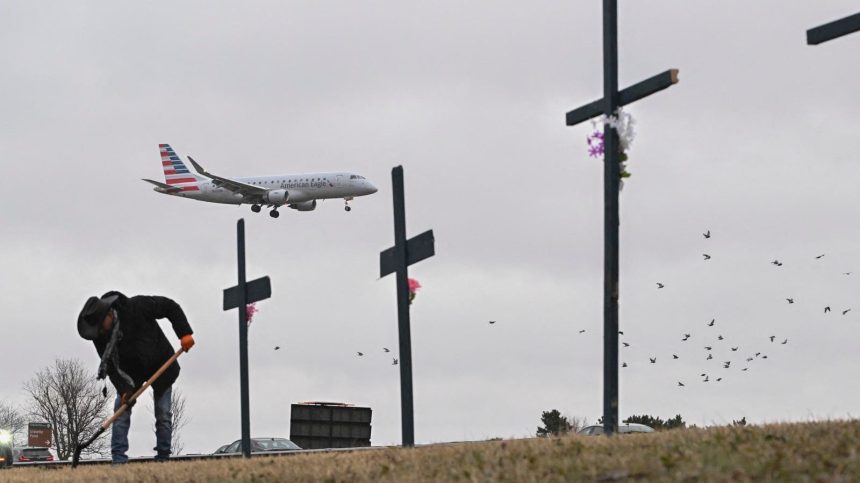The tragic collision of a Black Hawk helicopter and an American Airlines passenger jet over the Potomac River near Reagan Washington National Airport claimed the lives of all 67 individuals aboard both aircraft. Among the victims were two fathers and service members, identified as Ryan O’Hara and Andrew Eaves. O’Hara, a dedicated husband and father to a one-year-old son, served as the crew chief on the helicopter. A graduate of Parkview High School in Lilburn, Georgia, he distinguished himself in the Marine Corps Junior ROTC program before embarking on his military career. Colleagues remembered him for his unwavering commitment and discipline. Eaves, a Chief Warrant Officer 2 from Mississippi, was a beloved husband and father, described by his family as a kind, loving, and patriotic individual. His wife, Carrie Eaves, expressed her grief and requested privacy for her family. The identity of the third soldier aboard the helicopter has been withheld at the family’s request.
The loss of these two service members adds to a growing number of military personnel who have perished in helicopter crashes and mishaps over the past two years. At least 18 soldiers have died in such incidents, exceeding the number of fatalities in recent combat operations abroad. This statistic underscores the inherent risks associated with military aviation training and operations, even within domestic airspace. The soldiers aboard the ill-fated Black Hawk were members of the 12th Aviation Battalion from Fort Belvoir, Virginia, and were engaged in a routine annual training exercise when the collision occurred. The helicopter’s proximity to Ronald Reagan National Airport, a busy civilian airspace, raises questions about the coordination and communication protocols between military and civilian air traffic controllers.
The investigation into the crash continues, with authorities seeking to uncover the factors that contributed to the mid-air collision. Secretary of Defense Pete Hegseth described the helicopter crew as “fairly experienced,” while President Donald Trump suggested that the helicopter was operating “far above” its designated flight path. Reports indicate that the air traffic control tower had authorized the helicopter to fly no higher than 200 feet, but the aircraft deviated from its approved flight path. The recovery of the helicopter’s black box data recorder is crucial to understanding the sequence of events leading up to the collision and whether factors such as the use of night vision goggles played a role.
President Trump’s comments attributed the tragedy to air traffic controllers, the helicopter pilots, and Biden and Obama-era diversity hiring practices at the FAA. He alleged, without providing evidence, that individuals with “severe intellectual disabilities” had been hired due to diversity, equity, and inclusion (DEI) policies, which he claims to have since eliminated. These assertions have been met with criticism, as they appear to deflect responsibility and politicize a tragic event. The focus should remain on a thorough and impartial investigation to determine the root causes of the crash and implement measures to prevent similar incidents in the future.
The recovery efforts in the Potomac River have yielded more than 40 bodies, and the process of identifying the victims continues. The somber task of notifying families and providing support is underway. Among the victims are members of the U.S. National Figure Skating team, including young athletes with promising futures. Former Russian world champion figure skaters, a civil rights lawyer, parents and students from Fairfax County Public Schools, and a group of friends returning from a hunting trip in Kansas were also among those who perished. The diverse backgrounds and ages of the victims highlight the indiscriminate nature of tragedy and the profound impact of this loss on communities across the nation.
The collision of the Black Hawk helicopter and the American Airlines jet serves as a stark reminder of the inherent risks associated with aviation, both military and civilian. The loss of 67 lives, including two dedicated service members and a diverse group of passengers, has left a void in families and communities. As the investigation progresses, it is imperative to prioritize transparency and accountability. The lessons learned from this tragedy should inform policy changes and safety protocols to mitigate the risks of future aviation accidents and ensure the safety of all who travel by air.



